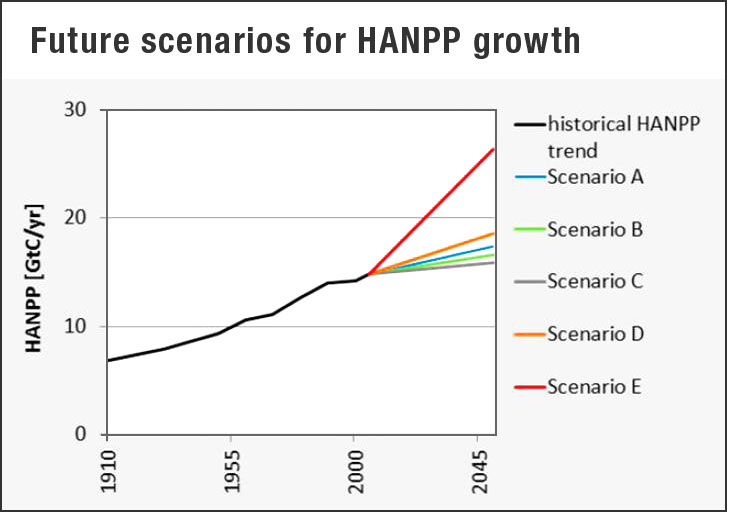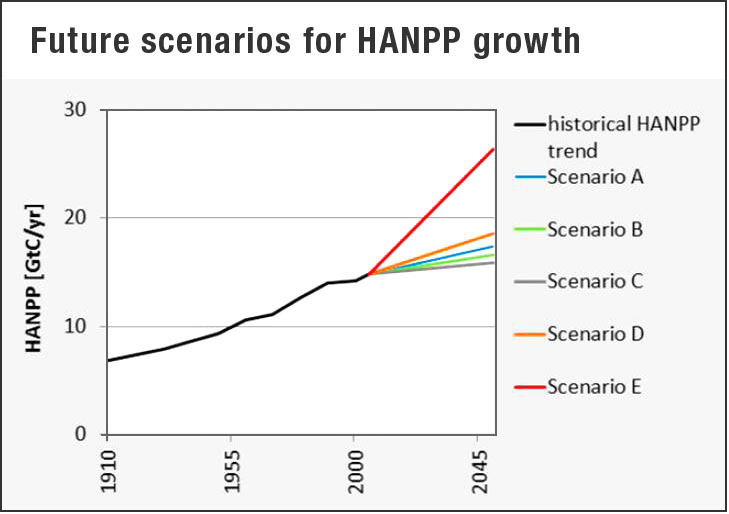
“Sustainability” is a term that is frequently thrown around rather loosely, but its use tends to be restricted to specific practices or areas — sustainable urbanism, agriculture or energy, for example. While there has long been concern over rising human population levels and resource consumption, the larger question of where the ultimate limits might be — the Earth is a fixed size, after all — has been subject to as much rhetoric-charged debate as considered research.
For baseline figures on global sustainability, the United Nations’ Food and Agricultural Organization is a good source. According to the FAO, the surface area of the earth is 13 billion hectares (the equivalent of 32 billion acres, 50 million square miles, or 130 million square kilometers). Of this, approximately 1.4 billion hectares — 10.6% — was arable land, meaning that it is currently cultivated, or has been, within the last five years. Forests, grasslands and wetlands can be converted to fields, of course, but any shift has consequences — less CO2 capture and increased greenhouse gasses; biodiversity loss; additional burdens on already limited water supplies. (A wide range of global and national statistics and data-visualization tools are available on the organization’s FAOSTAT website, as well as from the World Bank.)
Another option for producing more food is increasing the output of currently cultivated lands through agricultural intensification. The “green revolution” that started in the 1940s transformed farming, with increased use of mechanization, irrigation and new fertilizers and pesticides. Yields jumped, but so too did water and air pollution and aquifer depletion. According to a 2012 study in the Proceedings of the National Academy of Sciences, agriculture already consumes 92% of the freshwater used annually.
To better understand global and regional trends, scholars have been working to more accurately measure humankind’s growing impact on the biosphere, from our consumption of food, organic materials and other products of sun-powered energy, to our effect on the composition of the atmosphere, biodiversity and food webs. Scientists have developed two key terms in this area: The first is “net primary productivity” (NPP), which is the net amount of solar energy converted through photosynthesis to organic matter. It represents the primary food energy source for the world’s ecosystems and is measured in units of elemental carbon. The second term is “human appropriation of net primary productivity,” or HANPP, which is our consumption of net primary productivity — how much we’re taking for ourselves, versus leaving for the rest of the world ecosystem.
A 2013 study in Proceedings of the National Academy of Sciences (PNAS), “Global Human Appropriation of Net Primary Production Doubled in the 20th Century,” looks at long-term trends in HANPP. The researchers, based at a number of European institutions as well as Princeton University, based their work on data from 1910 to 2005. In the study, total HANPP is the sum of two subcategories, HANPPluc (land-use change) and HANPPharv (the quantity of NPP consumed by people). Calculating HANPPluc requires estimating the NPP that would have been generated had the original vegetation been left undisturbed; this is called NPPpot.
The study’s findings include:
- Despite significant gains in land-use efficiency from 1910 to 2005, human pressures on the terrestrial biosphere are rising. “[This] is a cause for future concern, given mounting evidence that humanity is already undermining the ability of global ecosystems to maintain vital ecosystem services and has arguably trespassed critical planetary boundaries for biodiversity loss and release of reactive nitrogen.”
- During the period studied, human population grew nearly fourfold — from 1.7 billion to 6.5 billion people — while economic output increased 17-fold. Over the same time, human appropriation of net primary production (HANPP) doubled. While proportionally lower growth of HANPP is a positive, it still increased from 13% in 1910 to 25% in 2005, meaning that humans currently appropriate a full quarter of the net primary productivity of the biosphere.
- Improvements in efficiency are the results of a range of factors, including the increased use of fossil fuels rather than draft animals and more effective conversion of biomass to products. “In the first half of the 20th century, the extraction of 1 ton of carbon in biomass for human use resulted in roughly 2.1 tons of HANPP in the global average. This ratio means that each ton of plants harvested required the manipulation of land that reduced total biomass production by more than an additional ton. However, by 2005, that ratio had declined to 1.6.”
- Increased efficiency was “overwhelmingly due to increased crop yields.” This is beneficial in holding down HANPP, but high yields also impose significant ecological costs, including the need for fossil energy use, soil degradation and biodiversity loss.
- Human appropriation of net primary production varies widely across the globe: Latin America has the highest rate per capita (5.8 tons of carbon per year) because of its relatively high biomass consumption levels and moderate crop yields. Asia has the lowest per capita rate (1.3 tons) because of its intensive production system and relatively low-meat diet. Africa has the sharpest increase in total HANPP, primarily due to substantial land-use change.
- In the industrialized West, high levels of biomass consumption, exports and livestock density are balanced by efficient production and declining land-use change. “HANPP per capita amounted to 3.5 [tons of carbon per capita per year] in 2005. It declined only moderately in the 20th century and remained more or less stable after 1980.”
- The study looks at five potential future scenarios for changes in human appropriation of net primary production until 2050. In scenarios A through C, different potential levels of economic and population growth are explored, and HANPP rises from 25% to between 27% and 29%. While the change may seem small, in percentage terms it represents a 7% to 17% increase in human appropriation of the world’s productive capacity — a significant additional impact on already stressed resources.
- Future scenarios D and E explore the use of global resources to create biofuels based on the U.N.’s report on renewable energy and climate change (IPCC-SRREN). Scenario D assumes only 50 exajoules per year (EJ/y) of additional energy production on top of the current 50 EJ/y. Scenario E adds an additional 250 EJ/y. “The big change would be the high bioenergy scenario, which implies a growth in HANPP to 44%; that is, a 78% increase over the present value.”
Keywords: agriculture, food, land use intensity, resource use, global carbon cycle.

